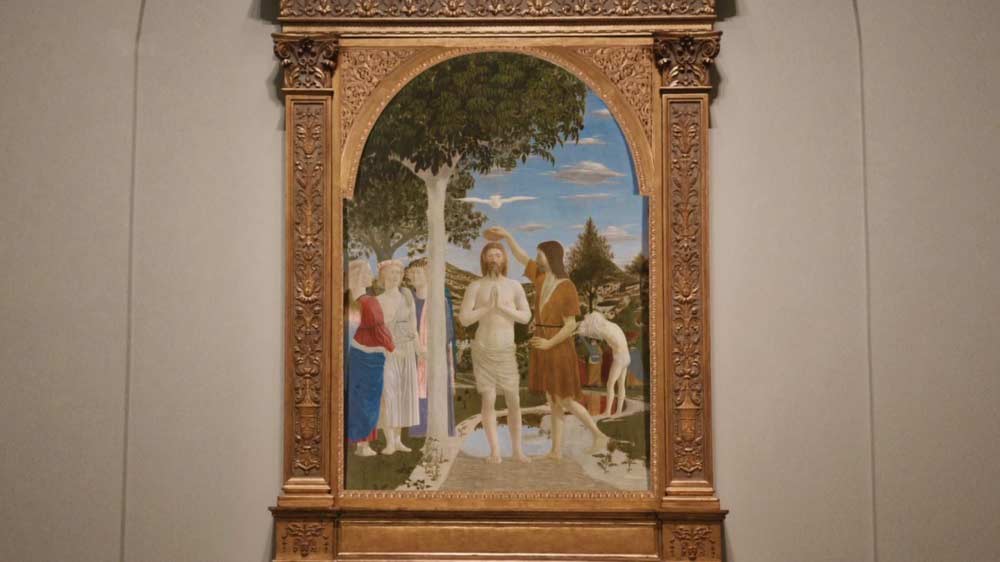Renaissance Revolution episode 3 – Piero Della Francesca – Baptism of Christ: Matthew Collings concludes the series by looking at the invention of Renaissance painting.
The Baptism of Christ by Italian master Piero Della Francesca showed the household names of the High Renaissance how to use the big new trick of Renaissance painting – illusionism and perspective. Without him their achievements would have been impossible, but change came so rapidly in the Renaissance that the qualities that made Piero famous in his own time quickly went out of fashion.
The Baptism was bought for the National Gallery in 1861 and later Cezanne and Picasso saw him as the real deal: the authentic, honest Renaissance, a model for modern painting. Now he is so in tune with secular modern taste that a tourist trail links his work in the beautiful hills of Umbria, Tuscany, and a few galleries around the world who own a precious panel by him.
Renaissance Revolution episode 3 – Piero Della Francesca – Baptism of Christ
The Baptism of Christ is a painting by the Italian Renaissance master Piero della Francesca, finished around 1448–50. It is housed in the National Gallery, London. The panel was commissioned presumably some time about 1440 by the Camaldolese Monastery of Sansepolcro in Tuscany, originally part of a triptych. Its dating to Piero della Francesca’s early career is evidenced by the strong relationship with the “light painting” of his master, Domenico Veneziano.
It portrays Christ being baptised by John, his head surmounted by a dove representing the Holy Spirit. Christ, John’s hand, the bird and the bowl form an axis which divides the painting in two symmetrical parts. A second division is created by the tree on the left, which instead divides it according to the golden ratio.
Behind John, a man in white briefs, his feet already in the water, is struggling to get out of his undershirt. The three angels on the left wear different clothes and, in a break from traditional iconography, are not supporting Christ’s garments, but are holding each other’s hands, in a sort of way. This could be an allusion to the contemporary Council of Florence (1431–45), whose goal was the unification of the Western and Eastern Churches. The Camaldolese monk and theologian, Saint Ambrose Traversari (+1439), who had been Prior General of the Camaladolese congregation, had been a strong supporter of the union. Such symbolism is also suggested by the presence, behind the neophyte on the right, of figures dressed in an oriental fashion.
